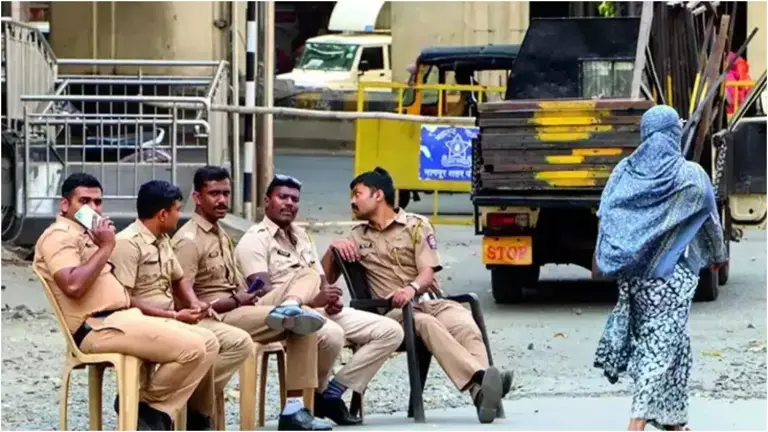Myanmar-Thailand Earthquake: Eyewitnesses Recall Shocking Moments as Skyscrapers Shake and Panic Spreads
Myanmar-Thailand Earthquake Leaves 150 Dead, Hundreds Injured in Widespread Devastation
A deadly Myanmar-Thailand Earthquake struck on Friday, sending shockwaves across the Southeast Asian region, causing chaos, panic, and deep fear among residents. The tremors, which were felt across multiple cities including Bangkok in Thailand and several parts of eastern Myanmar, have so far claimed the lives of 150 people and injured hundreds more, according to official reports.
The Myanmar-Thailand Earthquake has raised concerns not just over loss of lives, but also over the economic, business, and infrastructural impact on both countries. Several skyscrapers in urban centers visibly shook, sparking evacuations and emergency inspections.
Eyewitnesses from both Thailand and Myanmar are sharing disturbing accounts of the horror they experienced during the earthquake. Safdar, a resident of Kolkata who was visiting Bangkok, gave a firsthand account to ANI.
“I was on the road when I noticed skyscrapers shaking. Water started spilling from an infinity pool. People feared that buildings might collapse. It was terrifying. Public transport was shut for hours.”
Myanmar-Thailand Earthquake: Panic on the Streets of Bangkok and Yangon
The Myanmar-Thailand Earthquake was powerful enough to cause severe tremors in major cities, including Yangon, Naypyidaw, and Bangkok. Reports from local media confirm that thousands of residents rushed outdoors, unsure of the source or scale of the quake.
In Bangkok, where the skyline is dominated by tall glass-and-steel towers, the quake caused visible movements in high-rise buildings. Many occupants reported feeling dizzy, while others saw furniture and fixtures moving. Offices evacuated employees, and residential towers were temporarily cleared for safety.
In Myanmar, especially in eastern regions near the epicenter, entire neighbourhoods felt the brunt of the quake. Local hospitals were flooded with injured individuals, many suffering fractures, head injuries, or trauma from falling objects and debris.
Impact on Infrastructure, Transport, and Public Services
The Myanmar-Thailand Earthquake severely affected essential services and urban transport. In Bangkok, public transport networks, including metro and elevated rail systems, were suspended for several hours for structural safety checks.
Business districts across both countries experienced power cuts, internet disruptions, and mobile network outages. Offices closed early, and emergency response teams began assessments of roads, bridges, and buildings. While no major structural collapse has been reported yet in Bangkok, Myanmar’s interior regions are still under emergency scrutiny.
Several businesses in both countries faced losses as operations came to a standstill. In Bangkok, retail outlets and shopping complexes were evacuated, and office towers halted activities mid-day.
Myanmar-Thailand Earthquake: Economic and Business Consequences
The Myanmar-Thailand Earthquake is likely to have broader economic implications for both countries. Thailand, being a regional business hub with strong tourism, retail, and real estate sectors, may see short-term disruptions. Myanmar, already grappling with political instability, now faces additional challenges in managing disaster response and rebuilding efforts.
According to early estimates:
- Retail, hospitality, and logistics sectors in Bangkok could report up to 15% revenue disruption this week.
- Construction and real estate firms are expected to re-evaluate high-rise projects for earthquake compliance.
- Insurance claims may rise as property owners assess minor structural damages.
Emergency Response and Rescue Efforts Underway
Governments of both Myanmar and Thailand have activated disaster response protocols. The Myanmar Earthquake Department has released warnings regarding potential aftershocks, and citizens have been advised to stay alert.
Thailand’s Ministry of Interior confirmed that over 50 emergency teams were deployed across Bangkok and Chiang Mai for safety checks and medical response. Local municipalities are inspecting older buildings for cracks or weaknesses that could worsen in case of further tremors.
In Myanmar, NGOs and international aid agencies have stepped in to provide relief materials, medical supplies, and temporary shelters to affected families. Hospitals are working round the clock to treat those injured in the quake.
Social Media Flooded with Myanmar-Thailand Earthquake Videos
As is common during such events, videos and images from the Myanmar-Thailand Earthquake flooded social media platforms within minutes. From ceiling fans shaking in homes to water overflowing from rooftop pools, the visual content revealed the intensity of the tremors.
Hashtags like #MyanmarEarthquake, #ThailandEarthquake, and #BangkokTremors began trending on X (formerly Twitter), Instagram, and Facebook. Many users expressed concern, while others thanked authorities for quick response efforts.
Several influencers and journalists shared live updates from their balconies and homes, giving viewers around the world a real-time sense of the situation.
Regional Preparedness: Are Myanmar and Thailand Earthquake-Ready?
The Myanmar-Thailand Earthquake has also reopened discussions on disaster preparedness in the region. While Thailand has some earthquake-resistant building codes in place, Myanmar still faces challenges due to its developing infrastructure and political environment.
Experts are now urging both governments to:
- Review and update urban construction standards.
- Ensure emergency response training in schools, offices, and public places.
- Invest in early warning systems and mobile alert mechanisms.
Thailand’s Meteorological Department noted that although earthquakes are rare in the central region, the risk of tremors from tectonic shifts near Myanmar and Laos remains a threat.
Conclusion: Myanmar-Thailand Earthquake Leaves a Mark Beyond Physical Damage
The Myanmar-Thailand Earthquake is a stark reminder of the unpredictable power of nature. While both nations narrowly avoided large-scale infrastructure collapse, the quake has left an emotional and financial scar that will take time to heal.
For residents like Safdar and thousands of others, the memory of skyscrapers swaying and the fear of collapse will linger for weeks. Businesses, governments, and citizens alike are now reassessing their preparedness for future seismic events.
As Myanmar continues to pull survivors from the rubble and Thailand resumes normal operations, the Myanmar-Thailand Earthquake will remain a critical point of focus in Southeast Asia’s news cycle this month.
📌 Key Takeaways on the Myanmar-Thailand Earthquake
- 150 people confirmed dead, hundreds injured.
- Epicenter near eastern Myanmar, tremors felt across Bangkok.
- Business, transport, and public services temporarily disrupted.
- Governments issue warnings for aftershocks.
- Urban safety and emergency readiness now under review.







